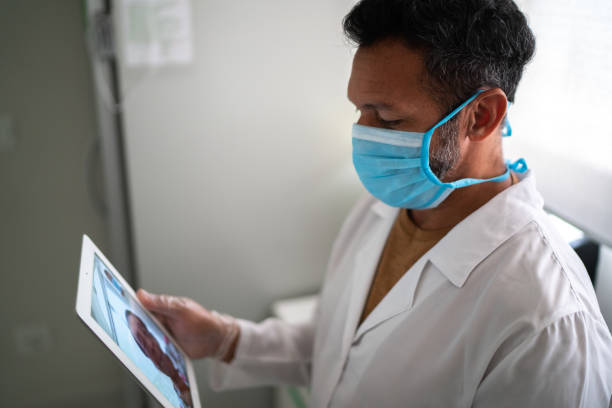A Deep Dive into Remote Patient Monitoring Systems and Their Benefits
 |
| Remote patient monitoring solutions |
In the realm of modern healthcare, remote patient monitoring solutions have emerged as a transformative force, revolutionizing the way patients receive care. By harnessing the power of technology, these systems offer unprecedented access and insights into patients' health, enabling healthcare providers to deliver timely and efficient interventions. Let's delve deeper into the world of remote patient monitoring systems, unraveling their benefits and the impact they have on the healthcare landscape.
Understanding Remote Patient Monitoring Systems
Remote patient monitoring systems, often referred to as RPM systems, are technological platforms designed to monitor patients' health data outside traditional healthcare settings. These systems utilize various devices, such as wearable sensors, mobile devices, and other medical equipment, to collect a comprehensive range of patient data, including vital signs, blood pressure, glucose levels, and more. This data is then transmitted securely to healthcare providers, enabling them to track patients' health in real-time without the need for in-person visits.
The Benefits of Remote Patient Monitoring Solutions
Enhanced Patient Engagement and Empowerment
By incorporating remote patient monitoring solutions, patients are empowered to take an active role in their own health management. These systems provide patients with valuable insights into their health metrics, fostering a deeper understanding of their well-being and encouraging proactive lifestyle changes. Through personalized data tracking and accessible resources, patients can make informed decisions and actively participate in their treatment plans, leading to improved health outcomes and a heightened sense of empowerment.
Improved Access to Timely Healthcare Services
One of the most significant advantages of remote patient monitoring solutions is the enhanced accessibility they offer to healthcare services, especially for individuals residing in remote or underserved areas. These systems bridge the gap between patients and healthcare providers, ensuring that individuals receive timely interventions and necessary medical attention, irrespective of their geographical location. As a result, patients can benefit from continuous monitoring and prompt medical support, reducing the risk of complications and improving overall treatment efficacy.
Efficient Disease Management and Prevention
Remote patient monitoring systems play a pivotal role in the effective management and prevention of chronic diseases. By continuously tracking patients' health metrics, these systems enable healthcare providers to identify potential health risks and intervene proactively, preventing the escalation of chronic conditions and reducing hospital readmissions. Through regular monitoring and data-driven insights, healthcare professionals can tailor personalized care plans and implement preventive measures, fostering better disease management and long-term health maintenance.
Implementing Remote Patient Monitoring Systems in Healthcare
Integrating remote patient monitoring solutions into the existing healthcare framework requires a comprehensive approach that emphasizes seamless data integration, streamlined communication channels, and robust security measures. Healthcare organizations must prioritize the adoption of user-friendly technologies that facilitate efficient data collection, analysis, and reporting, while ensuring compliance with stringent privacy regulations and data security protocols. Additionally, fostering a culture of continuous learning and skill development among healthcare professionals is essential to maximize the benefits of remote patient monitoring systems and deliver superior patient care.
The Future of Remote Patient Monitoring Systems
As technology continues to evolve, the future of remote patient monitoring systems holds immense potential for further innovation and advancement. With ongoing developments in artificial intelligence, machine learning, and predictive analytics, these systems are poised to become even more sophisticated, enabling healthcare providers to make data-driven decisions, predict health trends, and offer personalized interventions tailored to each patient's unique needs. The integration of telemedicine services and virtual care platforms will further enhance the accessibility and convenience of remote patient monitoring, reshaping the healthcare landscape and fostering a patient-centric approach to wellness and disease management.
Conclusion
Remote patient monitoring solutions have transformed the way healthcare is delivered, offering a dynamic and efficient approach to patient care. By leveraging cutting-edge technology and data-driven insights, these systems have the potential to improve patient outcomes, enhance disease management, and promote proactive health interventions. As the healthcare industry continues to embrace digital transformation, the widespread adoption of remote patient monitoring systems is set to redefine the future of healthcare, fostering a more accessible, inclusive, and patient-centered healthcare ecosystem.



Comments
Post a Comment